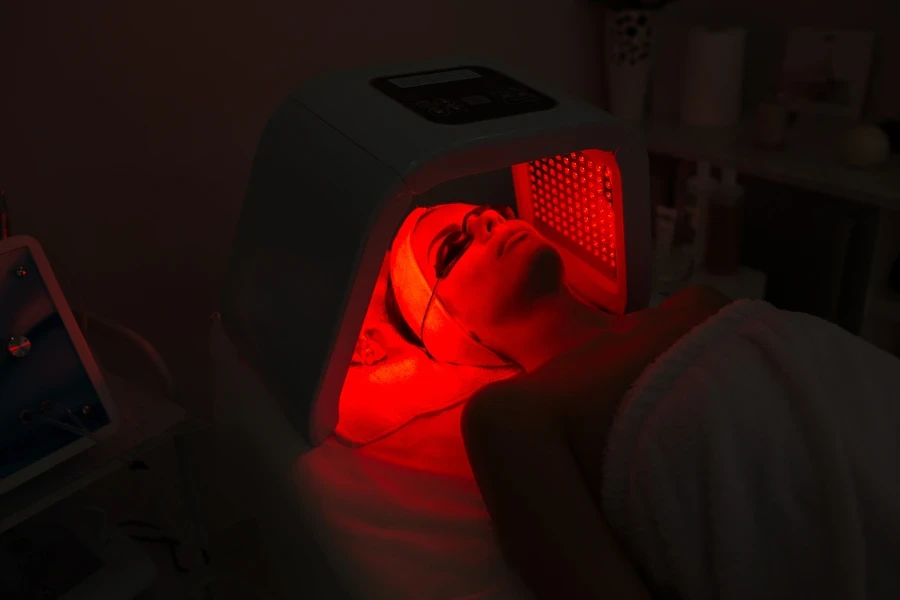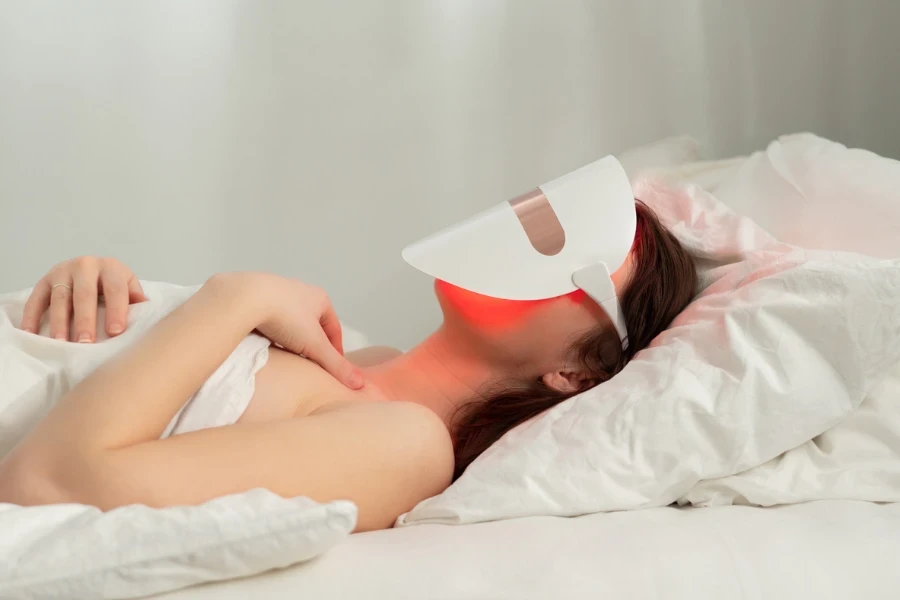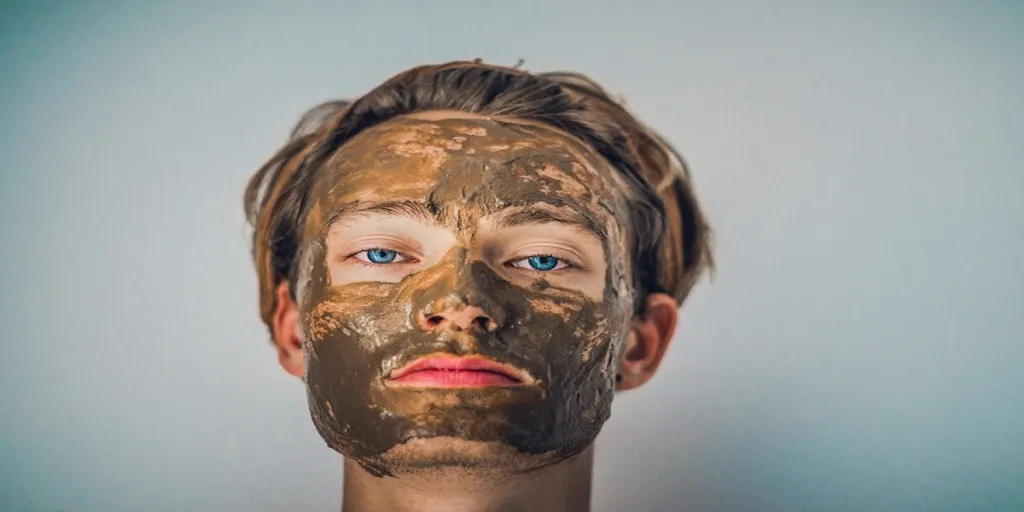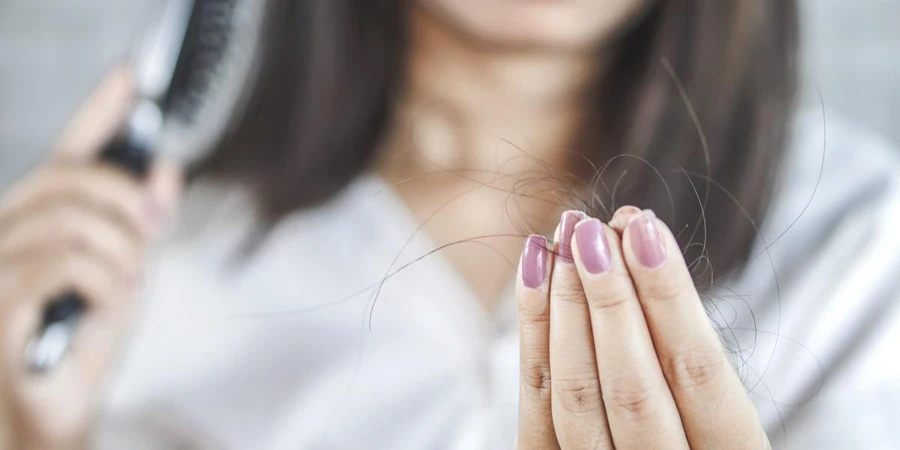Red light therapy, also referred to as low-level laser therapy, has been gaining popularity among customers who are looking to treat signs of aging and skin condition symptoms as well as relieve pain and inflammation.
Interest in red light therapy has seen a 60% growth over the past year, with 158,000 searches per month according to Google Ads. Furthermore, red light therapy videos are popular on TikTok, showcasing benefits and transformations after regularly using red light therapy devices.
This post will cover the benefits and risks associated with red light therapy, and offer a rundown of popular at-home devices your customers can use in 2024.
Table of Contents
What is red light therapy?
How red light therapy works
Benefits of red light therapy
Risks of red light therapy
Red light therapy devices for at-home use
Conclusion
What is red light therapy?
Red light therapy (RLT) is a low-risk, non-invasive treatment. Red light therapy uses low-level wavelengths of red light to treat skin concerns and pain. Red light therapy is offered at wellness clinics, spas, and athletic centers. There are also red light therapy devices for home use.
How red light therapy works

Red light therapy works by using a lamp or device with a red light. The red light penetrates the skin to repair the skin, reduce inflammation, and increase levels of collagen to reverse signs of aging. Customers using an at-home red light therapy device can see potential benefits in as little as a few sessions, but others may need to use the device consistently for weeks or months to notice results. The results will vary depending on your customers’ age, skin type, and skin conditions they are treating.
Benefits of red light therapy

Red light therapy devices are used on the face and body to improve the skin, reduce pain, and reverse hair loss.
Anti-aging: Red light therapy is used to increase collagen production, which reverses signs of aging. Customers who are concerned about their aging skin can use red light therapy to help tighten the skin and reduce wrinkles, fine lines, and age spots. Red light therapy can also reduce the appearance of under-eye bags.
Acne: Red light therapy is used to soothe and repair the skin, making it a good option for customers with acne. Red light therapy can reduce inflammation and acne scarring.
Psoriasis, eczema, and rosacea: Customers suffering from one of these skin conditions can benefit from red light therapy to reduce their symptoms. Red light therapy is used to reduce inflammation, irritation, itchiness, and redness.
Wound healing: Red light therapy promotes tissue repair, and it has been used to speed the healing process of minor wounds such as cuts and abrasions.
Pain and inflammation: Red light therapy is also used to relieve pain and reduce inflammation. Red light therapy can be beneficial for customers with arthritis, carpal tunnel, and muscle and joint pain.
Hair loss: Studies on red light therapy for hair loss have shown that red light therapy improves hair growth and increases hair counts and thickness.
Risks of red light therapy
Red light therapy is safe and pain-free. Red light therapy does not use ultraviolet light, which is the light from the sun and light used in tanning booths. Therefore, red light therapy will not tan customers or cause skin cancer.
However, misuse of at-home devices can potentially damage the skin or eyes. Red light therapy devices should be used as directed. The device should only be used 2-3 times a week for 10-20 minutes at a time. Customers should not use the devices for longer than 30 minutes or fall asleep while using the device, as the device could damage their skin. Customers should also consider wearing red light therapy glasses to protect their eyes from potential damage.
Red light therapy devices for at-home use

Red light therapy sessions at a wellness clinic or spa vary vastly in price and can be expensive for customers to afford long-term. However, at-home red light devices are an affordable option for customers. The best type of device will depend on your customers’ needs. If your customers’ main concern is aging, acne, or other skin conditions, a red light therapy device for the face is recommended. If your customer experiences pain and inflammation, a red light therapy device for the body would be a better choice.
Red light therapy devices for one’s face
Lamps: There are different red light therapy lamps that your customers can use, including lamps that sit on a table and handheld panels. Regardless of the type of lamp, the lamp will provide your customers with anti-aging benefits and better skin.
Masks: There are red light therapy masks that are worn on the face. Regular use of the mask will improve your customers’ skin, provide anti-aging benefits, and treat acne.
Eye masks: There are also red light therapy eye masks that are specifically for the under-eye area. The eye masks can reduce dark circles, the appearance of fine lines, and under-eye bags.
Facial wands: Another option for a red light therapy device is a facial wand. The wand is a handheld device used on the face to improve the appearance of the skin.
Red light therapy devices for one’s body
Full body lamps: Customers can stand in front of the lamp to experience the benefits of red light therapy on their whole body.
Beds: Customers can lay or sit on the red light therapy mat to relieve pain in the body and reduce inflammation.
Conclusion
Red light therapy is an excellent option for customers who are concerned with aging, acne, skin conditions, pain, inflammation, and hair loss. At-home devices are an affordable and accessible option for customers to see the benefits of red light therapy in the comfort of their homes. To learn more, or to explore a range of options, head to Alibaba.com.








